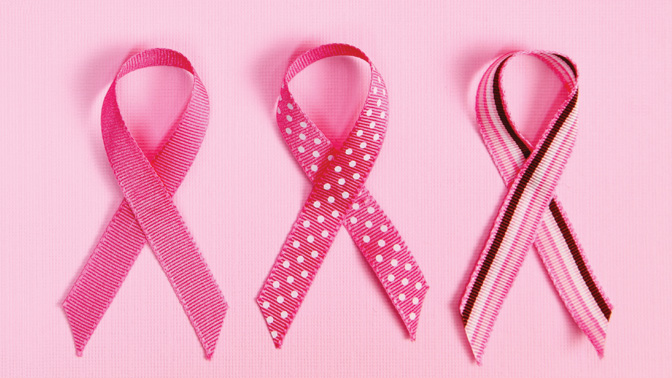Home page Description:
Revisiting pathways known to control cell growth reveals new breast cancer target.
Posted On: April 04, 2018

Image Caption:
Breast cancer is the third most common cancer in Canada: about 1 in 8 women are expected to develop the disease in their lifetime.
A team led by Dr. Eldad Zacksenhaus has re-examined key pathways that control cell growth and found a new way to target more aggressive breast cancers.
In cancer, cells grow and multiply uncontrollably. This can happen through two ways: proteins that prevent cell growth can be turned off releasing the ‘brakes’ on cell growth; or those that stimulate cell growth can go into overdrive.
In triple-negative breast cancer, multiple proteins involved in halting cell growth—such as RB1, PTEN and TP53—are frequently turned off together. This leads to a highly aggressive cancer that does not respond well to treatment.
Dr. Zacksenhaus, who is a Senior Scientist at the Toronto General Hospital Research Institute and Affiliate Scientist at Princess Margaret Cancer Centre, led a study to identify new therapeutic targets for triple-negative breast cancer. His team recreated some of the conditions seen in the disease by turning off different combinations of the RB1, PTEN and TP53 genes.
Using these models they were able to identify pathways that are activated in triple-negative breast cancer, including one in which a protein known as phosphatase cell cycle division 25 (CDC25) is activated.
The researchers went on to discover that blocking CDC25 inhibited the growth of drug-resistant breast cancer cells. This effect was more pronounced when CDC25 and another protein in the same pathway were both suppressed—suggesting that targeting the CDC25 pathway may represent a new therapeutic approach for aggressive breast cancer.
“Although the use of drugs to block CDC25 was previously investigated as a potential therapy for various cancers, the type of patients who would have benefited from such a treatment and the reason CDC25 was effective were not clear,” says Dr. Zacksenhaus. “Our results provide more insight into why these drugs work and support their potential use in the clinic for triple-negative breast cancer patients who may have increased CDC25 activity.”
This work was supported by the Canadian Cancer Society, the Canadian Institute of Health Research, the Terry Fox Research Institute, Genome Canada, the Ontario Genomics Institute, the National Institutes of Health and the Toronto General & Western Hospital Foundation.
Identification of CDC25 as a common therapeutic target for triple-negative breast cancer. Liu JC, Granieri L, Shrestha M, Wang D, Vorobieva I, Rubie EA, Jones R, Ju Y, Pellecchia G, Jiang Z, Palmerini CA, Ben-David Y, Egan SE, Woodgett JR, Bader GD, Datti A, Zacksenhaus E. Cell Reports. Apr 2018. doi : https://doi.org/10.1016/j.celrep.2018.03.039




